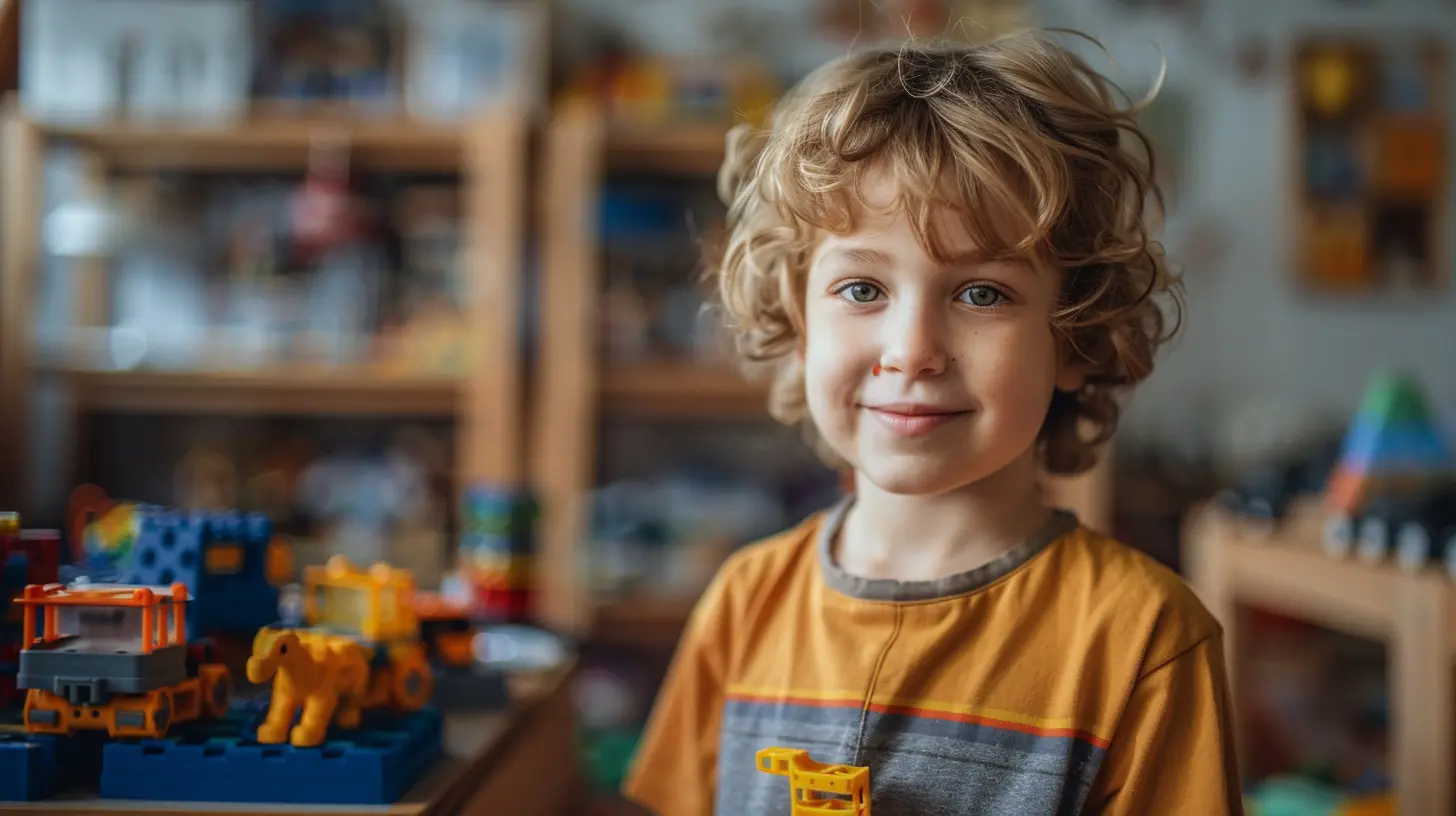STEM Toys: The Perfect Balance of Fun and Learning
17 September 2025
If you’re like most parents, you’ve probably found yourself standing in the toy aisle wondering, “Does this toy do more than just beep and flash?” We’ve all been there. While today’s kids have access to more toys than we ever imagined as children, not all of them are created equal. Some keep them busy, but others? They help them grow. That’s where STEM toys come in—because who says learning can’t be fun?

What Are STEM Toys Anyway?
Let’s break it down: STEM stands for Science, Technology, Engineering, and Mathematics. So, STEM toys are specially designed to teach kids core skills in those areas through hands-on play. Think of them as little learning labs wrapped in bright colors and cool designs. They’re the kind of toys that sneak in knowledge while kids are too busy having a blast to even notice they’re learning.Imagine your child building their first robot, creating a chain reaction with marbles, or programming a miniature car to follow a track. That’s not just play—it’s engaging their brain in a big way.

Why Parents Are Turning to STEM Toys
Nowadays, it’s not just about giving kids something to do. With screen time skyrocketing and attention spans shrinking, many parents are searching for toys that deliver more than temporary distraction. STEM toys offer a unique mix of fun and future-ready skills.They promote:
- Critical thinking
- Problem-solving
- Creativity
- Collaboration
- Persistence
And the best part? Your child doesn’t need to be a future Einstein to reap the rewards. STEM toys are designed for all curious kids—whether they’re obsessed with dinosaurs or just can’t stop asking, “Why?”

Built-In Learning Without The Eye Rolls
Remember those old-school educational toys that looked like they belonged more in classrooms than playrooms? Well, STEM toys have come a long way. Today’s options are sleek, engaging, and straight-up fun. They spark curiosity and encourage kids to ask questions instead of running from them.Let’s be honest, kids are more likely to get into learning when it doesn’t feel like homework. STEM toys create a playful environment where failure is just part of the fun. When a tower collapses or a circuit doesn’t work, they try again. And again. That’s resilience in action—and it’s beautiful to watch.

Age-Appropriate STEM Toys: What's Best for Your Kid?
For Toddlers (Ages 1–3)
You might be wondering, “Aren’t they too young for STEM?” Actually, no! At this age, kids are little scientists in diapers. They love exploring, touching, and figuring out how things work.Great picks include:
- Stacking blocks with magnets
- Simple shape sorters
- Light-up activity boards
These toys teach basic concepts like cause-and-effect and spatial awareness, all while improving motor skills.
For Preschoolers (Ages 3–5)
Preschoolers are all about asking “why” and “how.” This is a prime time to introduce hands-on STEM concepts in fun ways.Try toys like:
- Colorful coding caterpillars
- Marble runs
- Building sets with large, easy-to-handle pieces
There’s something magical about watching their faces light up when they complete a track or figure out a pattern.
For Early Elementary (Ages 6–8)
This is when kids start craving a bit more challenge. They’re ready to build real stuff, connect dots (literally and figuratively), and tackle mini-projects on their own.Recommended STEM toys:
- Beginner robotics kits
- Junior circuit boards
- Interactive storybooks with science experiments
They’ll start gaining confidence in their problem-solving skills—without even realizing it!
For Tweens (Ages 9–12)
At this stage, kids are starting to get into deeper topics. They can handle more complex tasks and follow multi-step instructions. They might even start showing interest in specific STEM fields.Top choices:
- Intermediate robotics kits (like Arduino starter sets)
- DIY engineering challenges
- Chemistry sets and coding games
When they build their own game or robot? That’s pure empowerment.
How STEM Toys Help with Real-World Skills
Let’s talk big picture for a sec. These aren’t just skills for school—they’re skills for life.- Problem-Solving: Whether it’s figuring out why the robot isn’t moving or how to stabilize a tower, kids learn how to troubleshoot and persist.
- Logical Thinking: STEM toys help children recognize patterns, plan ahead, and think strategically.
- Creativity Meets Logic: It’s not all cold, hard science. Building a house with blocks or designing a maze for a robot requires imagination, too.
- Teamwork: Many STEM kits encourage collaborative play, teaching kids how to share ideas and solve problems together.
- Confidence Boost: Each little success builds their self-esteem. They realize they’re capable of doing really cool things.
Tips for Getting the Most Out of STEM Toys
Okay, so you’ve picked the perfect toy. Now what?Here are some simple ways to maximize the benefits:
1. Play Together: Especially at the beginning. Your involvement can guide them through tricky parts and make them more excited to keep going.
2. Encourage Questions: Don’t worry if you don’t have all the answers. Google can be your best friend here!
3. Let Them Fail: Seriously. Failure is part of the learning process. Resist the urge to “fix” everything.
4. Rotate the Toys: Just like books, sometimes they need to disappear for a bit to become exciting again.
5. Mix with Real-World Activities: Pair a weather kit with a walk outside or a coding game with a real conversation about app development.
Screen Time vs STEM Time: Finding the Balance
Let’s be real—screen time isn’t all bad. In fact, there are tons of STEM apps that are genuinely educational. But the key is balance.STEM toys provide that hands-on experience that screens can’t match. They involve all the senses and help with fine motor skills. So if you’ve been trying to cut down on mindless YouTube binges? Replacing some of that time with STEM play is a win-win.
Budget-Friendly STEM Toy Ideas
You don’t need to break the bank to get quality STEM toys. In fact, some of the most effective learning tools can be made at home:- DIY lava lamps using oil and food coloring
- Homemade slime kits
- Cardboard engineering challenges
- Recycled robot crafts
Pinterest and YouTube are goldmines for this kind of stuff. Plus, working on a project together strengthens your bond—and isn’t that the best part?
Choosing the Right STEM Toy: What to Look For
Before you click “Add to Cart,” keep these things in mind:1. Age Appropriateness: Always check the age range. A toy that’s too advanced will frustrate your child; too simple, and they’ll lose interest.
2. Open-Ended Play: Look for toys that have multiple solutions or ways to play. Flexibility encourages creativity.
3. Durability: STEM toys often get tinkered with, so they need to be tough enough to withstand some rough testing.
4. Educational Value: Make sure it aligns with your child’s interests and learning level.
5. Fun Factor: If it’s not fun, it won’t get played with. Simple as that.
Final Thoughts: Why STEM Toys Deserve a Spot in Every Home
At the end of the day, STEM toys aren’t just about prepping your child for a high-tech job market (although that’s a nice bonus). They’re about helping kids grow into curious, capable, confident humans who aren’t afraid to tinker, question, and learn.They invite our children to think bigger, play smarter, and challenge themselves in ways we never thought toys could. And they let us, as parents, feel good knowing that playtime is more than just time killed—it’s time well spent.
So the next time you’re searching for a birthday gift, holiday surprise, or just a rainy-day activity, maybe pass on the noisy plastic gadget and try something that builds brains as well as memories.
Let’s raise makers, thinkers, doers, and dreamers—one fun STEM toy at a time.
all images in this post were generated using AI tools
Category:
Tech And KidsAuthor:

Steven McLain
Discussion
rate this article
1 comments
Jasmine Allen
Absolutely love the idea of STEM toys! They strike that perfect chord between fun and education, making learning feel like playtime. Let your little ones explore, create, and discover—who knows, you might be nurturing the next great inventor! Keep it playful!
September 27, 2025 at 4:28 AM

Steven McLain
Thank you! I'm thrilled you love STEM toys too—they truly inspire creativity and discovery in kids!


